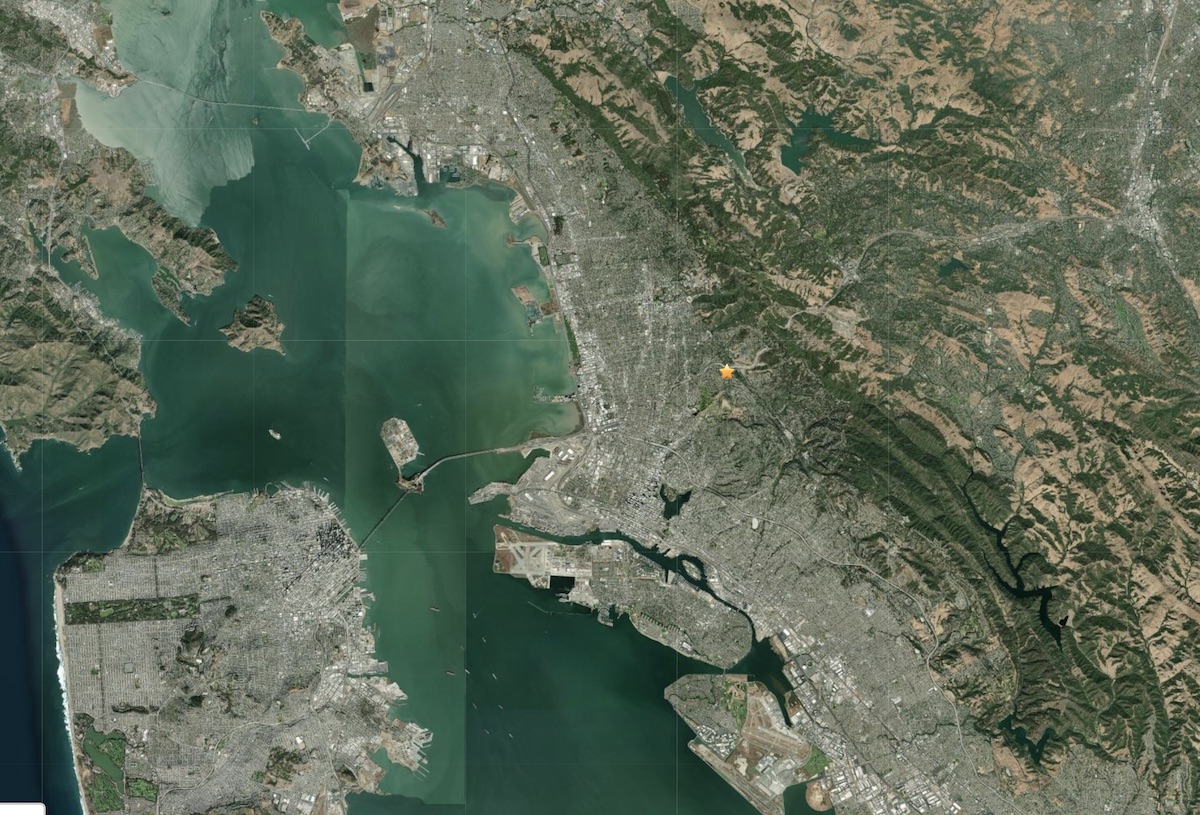If you live in Oakland, you know the drill. Every once in a while you’ll feel a jolt. Check social media and you’ll encounter a steady stream of the same question, or version of it: “Was that an earthquake, or just my dog leaping on the bed?”
While you can certainly crowd-source the answer to that question, you can also easily find real-time information about earthquakes in the Bay Area and around the world, by checking the U.S. Geological Survey site. But how do you decipher that information?
What does magnitude mean?
Magnitude refers to the physical size of an earthquake, and each whole number increase on the scale (2.0 to 3.0, for example) reflects a tenfold increase in seismic amplitude, or the size of the ground vibrations caused by a quake. Anything below a 4.0 magnitude earthquake is considered mild; 4.0-4.9 is light, 5.0-5.9 is moderate, 6.0-6.9 is strong, 7.0 to 7.9 is major, and so forth. For reference, the 1989 Loma Prieta earthquake that killed 63 people, collapsed sections of the Nimitz Freeway and Bay Bridge, and damaged thousands of houses in the Bay Area was a 6.9 quake.
(On April 26, 2021, there was a 2.6 magnitude earthquake centered in Upper Rockridge and many people on Twitter noted that it struck, eerily, on the birthday of Charles Richter, the seismologist who developed the scale that measures magnitude.)
Scientists rely on observational data to determine other aspects of an earthquake’s intensity. You can contribute to this collective research effort by telling the USGS when you feel a quake and whether it knocked down any decorations or appliances in your apartment.
How to prepare for the next earthquake
Everyone in California lives with the specter of The Big One. The Alameda County Sheriff’s Office has tips on developing an emergency plan so you’re ready to evacuate or locate family members and loved ones in the case of a severe earthquake. The county also has recommendations for items to pack in an earthquake kit, like blankets, water, flashlights, and even a pack of gum for stress relief. The Oakland Fire Department offers additional emergency preparedness resources and training programs.
Anyone in the county can sign up for the AC Alert system, which sends emergency notifications—about earthquakes as well as other safety issues—by phone, text, or email.

